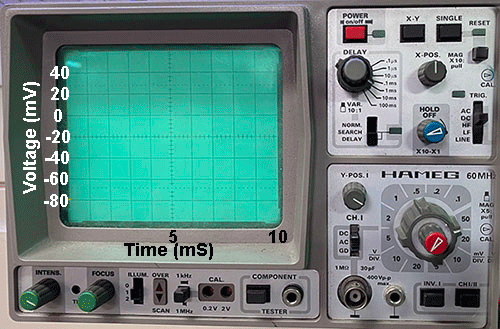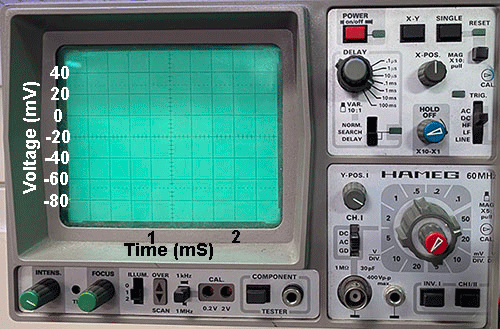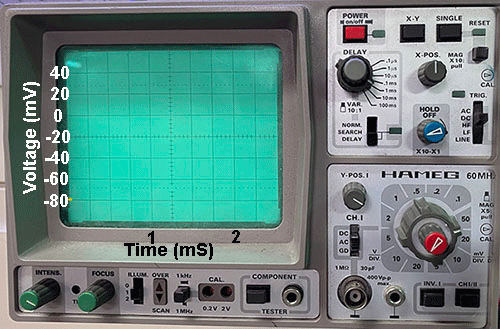Introduction

A common lab in physiology class is to isolate the sciatic nerve of a frog and use it to calculate the conduction velocity. To do this, the sciatic nerve is removed from a pithed frog and placed in chamber much like the one to the right. On one end are electrodes that stimulate the action potential of the nerve. On the other end are electrodes that record action potential passing that point of the nerve. Since conduction velocity is distance over time, it is quite easy to calculate the velocity with this setup. The next paragraph will explain how this is done. |

Velocity is the distance traveled divided by time. Say a car were to drive 80 miles in one hour. To find its velocity, you divide distance, 80 miles, by time, one hour, to get the velocity of 80 miles per hour. We can therefore calculate the velocity of nerve by measuring the distance between the 2 sets of electrodes, which is 43 mM for our experiment, and dividing it by the time it takes the action potential to appear on the oscilloscope. If you look at the reading to the left, it took 5 milliseconds for the action potential to start. Therefore to find the conduction velocity, you divide 43 mM by 5 mS and get a conduction velocity of 8.6 mM/mS. Since a perfectly good frog has to be sacrificed to perform this experiment, we are going to be doing a computer simulation instead. On the left hand side are 4 neurons to be simulated. We will be looking at the effect increasing size has on neurons and the difference that myelination makes. Click on each tab and observe the action potential. Then calculate the conduction velocity by dividing 43 mM by the time it took the action potential to start. Your teacher may also have you measure the depolarization, repolarization, and refractor periods. |



